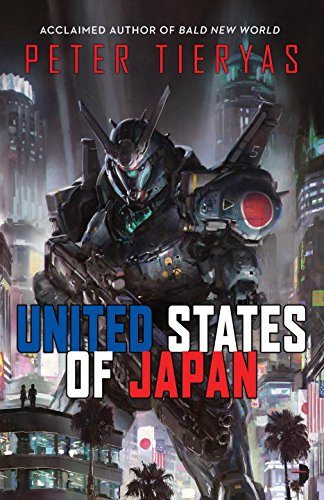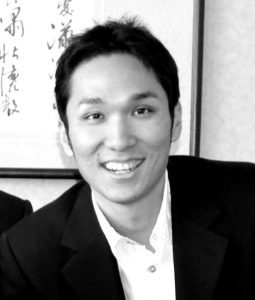
This week on Geek Speaks…Fiction! we welcome science fiction author Peter Tieryas! Peter’s new book The United States of Japan from Angry Robot is quickly becoming a fan favorite, combining alternate history, tech, and of course, mecha!
The history of World War II and the tragedies that happened back then are still a part of the cultural fabric in much of Asia. In many ways, the mecha in anime is a symbol of humanity using science to harness powers that would belong to deities to defy history, or in cases like Neon Genesis Evangelion, strike the celestial angels down.
I’ve always loved big mechas driven by pilots versus, say, big robots like Transformers (which I loved too), because there was something remarkable about these powerful machines being controlled by actual humans. In many instances, they were younger students, forced into extreme duress, often with the existence of all mankind at stake. Resisting fate is either the ultimate sin in the form of hubris, or a Promethean protest in favor of humanity. I preferred to think of it as the latter as I empathized with the attempt to resist against all odds.
I grew up in the States but moved to Korea for two years when I was eight. I had a very difficult time because I did not speak the language nor understand the culture, which led to a lot of bullying. I’d watch student protests on television, see many of them arrested, and be warned by adults, be careful what you say or you’ll get in trouble. It seemed everywhere I turned, there was violence.
I found two ways of coping through those years. The first were video games. I had a Nintendo, but I also liked to visit the massive arcades full of incredible games. They required baek won, or a 100 cents, per game. I didn’t have much money, so I had to be sparing. Most of the time, I just watched other people play and imagined myself in control, making the game even more interesting than it actually was.
The second was writing. If imagination is the fuel that helps organize the random tatters of our existence, it’d imply the chemicals in our brain revolt at the idea of meaninglessness. I still have notebooks full of my silly fantasy/science fiction stories about my adventures with friends. Writing helped me to make sense of my everyday happenings.
After I left Korea and grew older, I learned that the country had been occupied during WWII and that the consequences of the actions back then reverberated all the way to the present. Contemporary international politics throughout Asia are still affected by memories of what happened. I wanted to know more about that past and I became both fascinated and terrified learning about the secret weapons the Axis forces were developing. Some of the railway guns that the Germans constructed look like something out of science fiction. The Imperial Japanese Army was developing super tanks like the O-I as well as flying tanks and death rays. For both sides, the two biggest issues they faced with the bigger weapons were finding the right source of energy, and mobility. If the Allies hadn’t won, who knows what they would have developed and how they would have used them?

That’s where I geeked out in a dark way and answered my own questions in the form of a spiritual sequel to Philip K. Dick’s The Man in the High Castle, just with a focus on the Pacific Theater. Since the Axis forces won WWII in the book, the Japanese overcame the issues of limited resources by conquering Southeast Asia (this is after they are victorious with the Germans over the Soviet Union). The Japanese create huge mechas that tower over the Empire. They’re so powerful that they’re rarely used and have become more of a symbol for the USJ and the Emperor, similar to the way nuclear weapons are a deterrent and only deployed in extreme circumstances.
The more I learned about the tragedies of WWII, the more it tore me to pieces. I became haunted by the accounts, whether the fire-bombings of Japanese cities where countless were burned to death or all those in China and Korea who suffered under a brutal occupation. I literally started to have nightmares as I thought about the victims. In United States, their history wasn’t as well documented and many of my friends had no idea about it. Would anyone care about their stories anymore?
I knew many of the issues in USJ are still very contentious in Asia. Even until the moment it was published, I wondered what I was doing. But when it finally came out, I felt a tremendous sense of relief, like a weight came off my chest.
I realized, United States of Japan had become my mecha, my way of surrounding myself with armor plating, then using a fusion sword of words to break through the sense of horror I felt at what I’d researched. This time, I was in control, though. No coin limitations and bound only by a desire to remain faithful to the history and culture.
I geek out every time someone asks me about the history and technology behind the book. I hope you do too.

Peter Tieryas is a character artist who has worked on films like Guardians of the Galaxy, Alice in Wonderland, and Cloudy With a Chance of Meatballs 2. His novel, Bald New World, was listed as one of Buzzfeed‘s 15 Highly Anticipated Books as well as Publishers Weekly‘s Best Science Fiction Books of Summer 2014. You can find Peter Tieryas online at his website and @TieryasXu on Twitter.





Moving this one up a bit on my reading list.